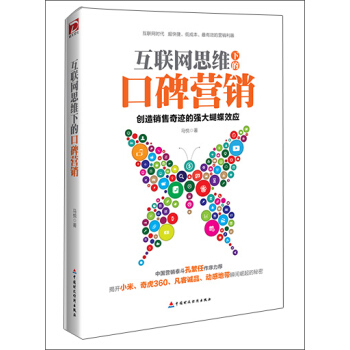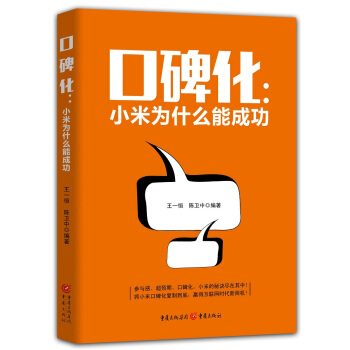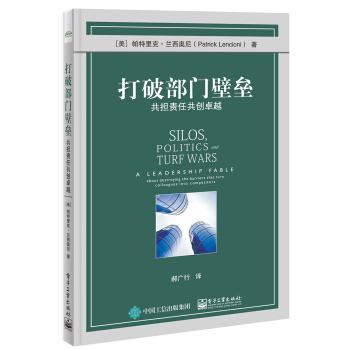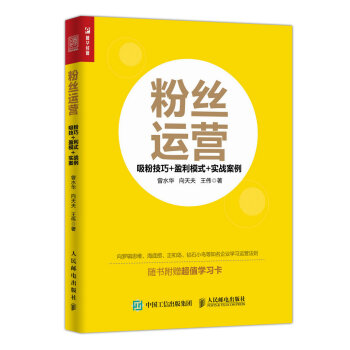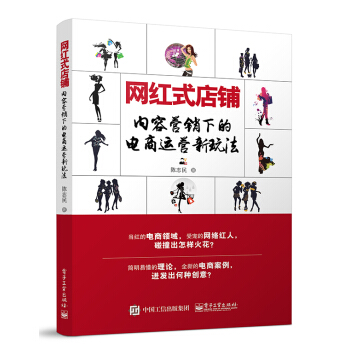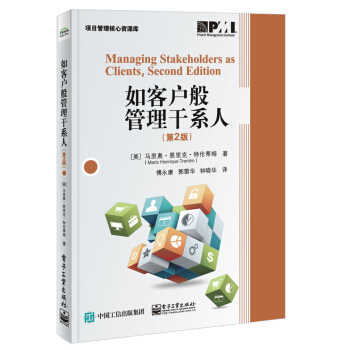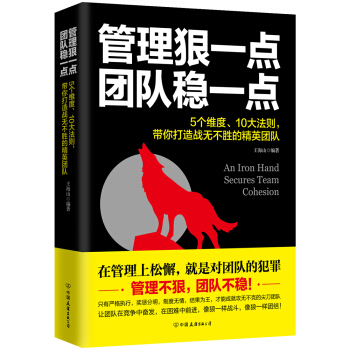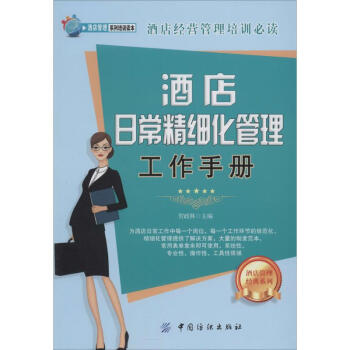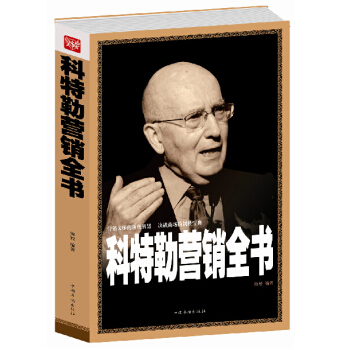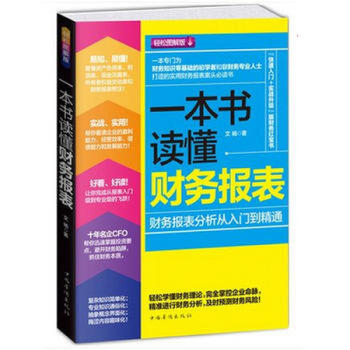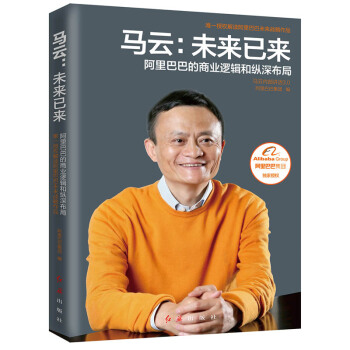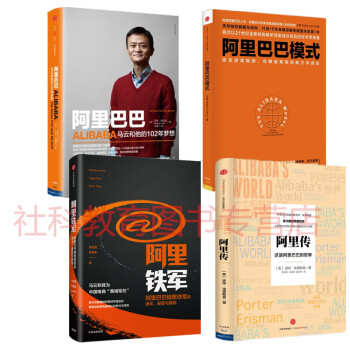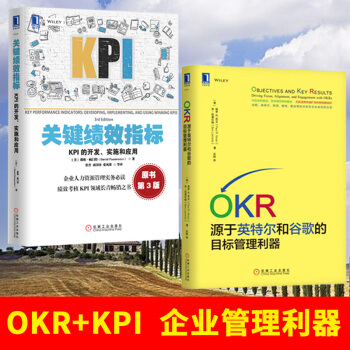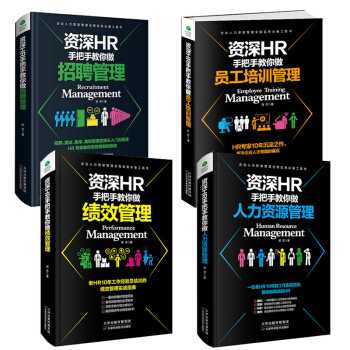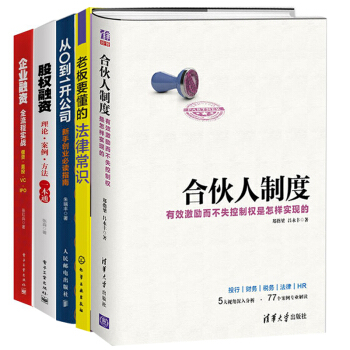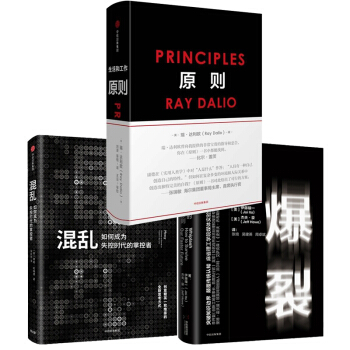![新职业锚:职位和工作角色的战略新规划 [Career Survival:Strategic Job and Role Planning]](https://pic.windowsfront.com/11665433/550a46fcN5c22c2bf.jpg)

具体描述
编辑推荐
埃德加·沙因是美国麻省理工学院斯隆商学院教授,世界百位具有影响力的管理大师之一,企业文化理论之父,企业文化与组织心理学领域的开创者和奠基人,国际上享有盛誉的组织文化大师。《新职业锚:职位和工作角色的战略新规划》一书的主要目标,是帮助职场人士重新定义他们的工作角色,并帮助他们适应不断变化甚至有些动荡的工作环境;帮助企业管理者与人力资源实时改进工作规划以及进行工作诊断,并将这些变化传达给继任者。
湛庐文化出品。
内容简介
身处职场,你是否很难搞清楚一些利益相关者现在或未来对你的期望是什么?如果关键利益相关者对你的期望的总和已经远远超出了你的能力范围,你该怎么办?而如果两个或更多的利益相关者对你的期望互相冲突时,你又该如何抉择?《新职业锚:职位和工作角色的战略新规划》一书对于职场人士可能面临的三个困境,提出了角色模糊、角色超载和角色冲突的概念,并结合具体案例,给出了解决方案。著名管理大师、组织文化奠基人沙因教授在本书中为读者如何构建职业生涯,如何面临职业挑战给出了明智的建议。书中分六步详细讲述了职位和工作角色的战略新规划,并提供了测试,以便读者对自己过去和现在的工作进行比较;并适当留白,让读者记录与自己目前工作相关的一些信息。这是企业管理者与人力资源必读的一本书。
作者简介
埃德加·沙因,美国麻省理工学院斯隆商学院教授,世界百位最具影响力的管理大师之一,企业文化理论之父,企业文化与组织心理学领域的开创者和奠基人,国际上享有盛誉的组织文化大师。在组织文化领域,他率先提出了关于文化本质的概念,业界公认“企业文化”一词是由他“创立”的,他还率先提出了职业发展、职业锚、过程咨询、强制性说服等概念。曾为苹果、花旗、宝洁、摩托罗拉、惠普、壳牌、DEC、国际原子能机构等知名企业做管理咨询。代表作有:《组织文化与领导力》《沙因组织心理学》《职业锚》《企业文化生存指南》等。精彩书评
★从斯隆商学院毕业后,我被联合国派往非洲工作,要处理很多文化融合上的棘手问题,十分头疼,于是我就跑回斯隆请沙因教授出马,担任我的咨询顾问。有了他的帮助,问题迎刃而解。所以我一直特别感谢我的老师埃德加·沙因。——联合国前秘书长 科菲·安南
目录
序言 当组织快速变化,工作角色频繁转换时前言 职位和工作角色规划该如何进行
01 从关键利益相关者到角色网络
02 职位和工作角色分析与规划的6大步骤
03 Step 1:盘点当前的职位和工作角色
04 Step 2:识别环境中的变化
05 Step 3:评估环境变化对利益相关者期望的影响
06 Step 4:确定环境变化对职位和工作角色的影响
07 Step 5:重新定义工作要求
08 Step 6:扩大战略性的职位和工作角色规划活动
09 让个体需求与组织需求保持一致
译者后记
精彩书摘
分析模糊、超载和冲突关键利益相关者的期望确定后,你可能会注意到以下三个占主导地位的问题:角色模糊、角色超载和角色冲突。以下内容会为你如何处理这些情况提供一些指导性建议。
角色模糊
你首先会注意到:你很难搞清楚一些利益相关者现在或未来对你的期望是什么,这就是所谓的角色模糊。目前,角色模糊问题在组织中越来越普遍。
如果你正在经历角色模糊问题,可以有以下两种选择:
建立沟通渠道以减少模糊。与利益相关者交谈,让他们分享对你的期望或者主动将你的看法告诉他们,寻求他们的建议。
决定“与模糊共存”。观察利益相关者未来的行为,直到你能够把这些行为表现当作线索去理解他们想要的是什么。
显然,如果你能够获得“角色澄清”,那么第一种选择无疑是最佳的。然而,由于利益相关者可能并没有意思到自己的期望是不清晰的。因此,你必须采取主动。
角色超载
第二个问题就是角色超载,即你意识到关键利益相关者对你期望的总和已经远远超出了你的能力范围。
如果几个利益相关者不是同等重要,角色超载通常可以通过忽略不太重要的利益相关者的期望来应对。然而,这种应对方法往往会带来一些麻烦。因为,被忽略的利益相关者可能会对此产生一些消极反应。
角色超载的第二种应对方法是:通过满足利益相关者的部分期望来予以妥协。不幸的是,这可能会让他们产生“你足以胜任”的错觉。
实际上,应对角色超载最好的方法是与你的利益相关者沟通实际状况,让他们帮助你安排事务的轻重缓急。你需要厘清对他们而言什么是最重要的。有时候,这些利益相关者可能甚至都不知道自己对你的所有期望。一旦你告诉他们你已经超载,他们才能决定对其本人而言什么才是最重要的,或者他们才愿意授权你自己做出决策。
角色冲突
当你意识到两个或更多的利益相关者对你的期望互相冲突时,这就意味着发生了角色冲突。
角色冲突通常有三种表现形式:
你的上级所期望的与你的下属所期望的相冲突;
你的某个同事(利益相关者)所期望的与另一个同事(利益相关者)所期望的相冲突;
你的某个关键利益相关者所期望的与你的个人期望相冲突。
我们每个人都是自己工作的利益相关者,因为我们都有个人期望。通常,我们的本能决定了我们不需要任何理由就会去尽力实现自己的期望。这就容易使得我们在伦理道德和个人动机之间陷入两难境地。
在以上各种情况中,与利益相关者重新进行角色协商是很重要的,这有利于减少冲突所造成的情感损失。当然,这也意味着你必须找到一种方法与利益相关者进行沟通,让他们知道各自的期望是如何冲突的,这样就可以使得他们参与到协商中来或者授权你来解决冲突。反之,如果你未经沟通单方面地采取行动,就可能会产生一些消极的后果:比如,会导致某个利益相关者对你失望,或给他留下你不情愿或没有能力去实现他的期望的印象。
在角色超载或角色冲突中,会有一种特殊情况,那就是家庭或朋友的期望与工作的期望相冲突。这种“工作—家庭”超载和“工作—家庭”冲突正愈演愈烈,并且随着组织边界的模糊而日益严重。如果人们更多地选择在家工作,超载可能会减少。但是,在家工作的前提是现有文化可以充分理解员工平衡“工作—家庭”的责任和义务,而这一前提与当前人们对“组织—员工”关系的主流态度并不一致。解决这类问题,不仅需要理解组织未来的发展形势,而且需要与组织和家庭进行复杂的沟通与协商。最后,也需要对工作的文化性质进行改变。
完成了当前的职位和工作角色分析后,需要继续进行下一步:识别环境中的变化。
……
前言/序言
大多数管理者和员工都一致认为,组织正在快速地发生变化,而且这种变化的速度越来越快。其中,最主要的变化就是,对职位或工作本身的定义变得越来越不清晰了。如果真像人们所推测的那样,减少层级、趋于扁平化和以项目为基础进行工作是大势所趋,那么大多数管理型、专业型和技术型的员工将会发现,他们自身的工作角色正处于频繁的转换当中。职位描述(job descriptions)将会变得越来越不适用,原因是:(1)职位描述是为了营造和维持组织的稳定性而设计的;(2)职位描述对于职位和工作角色是如何相互联系的并没有进行充分的说明。鉴于此,我们需要如下动态的过程:
允许任职者重新定义他们不断变化的工作角色,并适应不断变化甚至有些动荡的环境;帮助主管和经理实时追踪组织中工作角色所发生的变化,并将这些变化传达给继任者。
本书中所描述的“战略性的职位和工作角色规划”正是这样一个动态的过程。书中讲述的所有活动指南和概念性材料都是根据《职业动力学:将个人与组织的需要结合起来》(Career Dynamics : Matching Individual and Organizational Needs)一书中首次公布的研究资料所撰写的。此后,这种动态方法就在各种类型的组织中开始广泛试用。
谁需要进行职位和工作角色规划
每个人都应该定期地评估自己的工作情况,确定自己的职业目标能否与行业市场状况、个人的长期规划保持一致。然而,下列几类员工尤其需要把职位和工作角色规划摆在优先考虑的位置。
正在经历变化的组织中,那些技术型、专业型和管理型的员工及主管;
被列入继任计划和(或)负责下属职业咨询的管理者;对工作职责不确定、困惑或接受了新任务的员工。
作为一名员工,职位和工作角色规划将帮助你:
理解你的工作所处的社会网络;确定你的工作要求和关键的利益相关者;增加你对于组织和组织动力学的理解;分析组织变革会给你造成的影响。
作为一名管理者,职位和工作角色规划将帮助你:
理解你的工作是如何影响你的下属的,以及他们对你的期望是什么;向下属解释清楚工作要素的动态性,并向他们说明如何为将来的工作做准备;将你本人和下属的工作与组织的使命和战略联系起来;进行更多、更有效的组织规划和人力资源规划。
用户评价
评价四: 这本书真的让我对“职业规划”这个词有了全新的认识。以前我总觉得,职业规划就是找一份好工作,然后一步一步往上爬。但《新职业锚》这本书,彻底颠覆了我的这种认知。它不仅仅是关于“找什么样的工作”,更是关于“你是什么样的人,你能带来什么样的价值”。作者巧妙地将“职业锚”这一概念,与现代社会快速变化的职位和工作角色相结合,提供了一套非常具有前瞻性的战略规划方法。书中的分析非常透彻,对于当下职场中各种“模糊地带”和“灰色地带”的解读,都让我觉得非常到位。它教会我如何去识别那些不易被替代的核心竞争力,如何在不同类型的岗位之间找到共通的价值点,以及如何去构建一个能够应对未来不确定性的“弹性职业体系”。我尤其喜欢作者对于“心态调整”和“人脉投资”的建议,这些都是在硬技能之外,同样至关重要的软实力。读完这本书,我感觉自己不再是那个被动等待机会的人,而是那个主动创造机会、并且能够稳健前行的人。
评分评价五: 我一直认为,优秀的职业发展书籍,不应该只是提供一些空泛的建议,而是应该能够触及到读者内心深处,引发他们对于自身价值和未来方向的深刻思考。《新职业锚》这本书,无疑做到了这一点。它不仅仅是一本关于职业规划的书,更像是一次关于自我认知和价值实现的深度对话。作者以其敏锐的洞察力和扎实的理论功底,为我们揭示了在当下这个快速变化的就业市场中,如何通过“新职业锚”来实现“职位和工作角色的战略新规划”。书中的每一个观点,都经过了深思熟虑,并且提供了切实可行的方法和工具。我尤其欣赏作者对于“个人价值的持续挖掘”和“跨领域能力的构建”的强调。在如今这个专业分工越来越细的时代,拥有跨领域的能力,将是保持职业活力的关键。它让我明白,职业发展不是一条直线,而是一张动态的网,我们需要在这个网中找到自己的节点,并且不断地拓展和加强连接。这本书不仅让我看到了职业发展的更多可能性,更让我找到了实现这些可能性的具体路径。
评分评价一: 拿到这本书的时候,我抱着一种半信半疑的态度。现在的职场变化太快了,感觉每天都在学习新的东西,生怕自己被时代淘汰。书名里的“新职业锚”和“战略新规划”听起来就很有分量,让我觉得作者一定对未来的职业发展有着深刻的洞察。翻开第一页,就有一种被吸引的感觉,文字流畅,逻辑清晰,不像有些专业书籍那样枯燥乏味。我特别欣赏作者在开篇就强调了“主动性”的重要性,不再是过去那种被动接受公司安排的时代了,我们每个人都要成为自己职业生涯的设计师。书中提出的“职业锚”概念,我之前也有所耳闻,但这本书将其系统化、具体化,并且结合了当下最新的行业趋势,给出了非常实操性的方法论。比如,书中提到的如何识别自己的核心优势和潜在“锚点”,以及如何根据市场需求进行动态调整,这些都让我受益匪浅。我感觉自己像是收到了一份量身定制的职业发展地图,不再迷茫,而是充满了方向感。特别是对于那些在职业转型期或者感到职业瓶颈的读者来说,这本书无疑是一盏指路明灯。它不仅仅是关于“找工作”,更是关于“如何持续在职场中找到并保持自己的价值”。
评分评价二: 我一直是个对职场规划有点焦虑的人,总觉得自己不够“卷”,或者是在错误的赛道上。“新职业锚”这本书,简直是我近期读到的最“解渴”的一本书了。它没有那些虚头巴脑的成功学口号,而是用一种非常务实、甚至有点“硬核”的方式,来剖析我们如何在不断变化的就业市场中找到属于自己的立足之地。书里对“职位”和“工作角色”的区分,以及如何将两者进行战略性结合,真的是让我眼前一亮。过去我可能只关注到某个具体的职位,但这本书让我意识到,更重要的是那些能够跨越不同职位、不同行业的核心能力和价值定位,也就是作者所说的“职业锚”。它教会我不仅仅是去看眼前的“跳板”,更要去审视那些能够支撑我“飞跃”的“根基”。我尤其喜欢书中对于“技能组合”和“个人品牌”的论述,这些都是在这个信息爆炸、知识快速迭代的时代,个体能否保持竞争力的关键。读完这本书,我感觉自己就像是一个刚刚拿到一份专业工具箱的工匠,对未来的工作充满了信心,知道如何去打磨自己的技能,如何去构建自己的专业声誉。
评分评价三: 说实话,起初我购买这本书,纯粹是因为它在书店里看起来最有“深度”,封面设计也比较吸引人。没想到,内容更是让人惊喜。这本书的结构设计非常合理,层层递进,从宏观的职业发展趋势分析,到微观的个人技能评估和战略规划,都处理得恰到好处。我印象最深刻的是,作者在书中并没有回避职场中的挑战和不确定性,反而将其视为重新定位和升级的契机。它不是一本教你“如何爬得更高”的书,而更像是一本告诉你“如何在高处屹立不倒”的指南。书中的案例分析非常贴合现实,很多场景都让我想起自己或身边朋友的经历,这使得理论的学习过程更加生动和有代入感。我特别赞赏作者对于“持续学习”和“弹性适应”的强调,这在如今这个“VUCA”时代,已经不是一种选择,而是一种生存之道。它让我意识到,职业发展并非一蹴而就,而是需要持续的耕耘和有策略的调整。这本书让我从一种被动的“打工者”心态,转变为一个积极的“职业生涯管理者”。
评分江河湖海恍恍惚惚恍恍惚惚恍恍惚惚
评分感觉还可以,能接受这样的
评分江河湖海恍恍惚惚恍恍惚惚恍恍惚惚
评分同学推荐我买的这个果然不错,花了2个通宵通读了一遍!同学推荐我买的这个果然不错! 真心给力的一本书,喜欢这个作者!书质量很好,纸张不错!而且是活动买的,便宜啊。。。京那个东出品。正版。。。收藏用。物流挺好,派送迅速。快递态度ok。送货上门,服务好 速度很快,包装精美,每一本都有塑封,书很新 今天我在网上买的几本书送到了。取书的时候,忽然想起一家小书店,就在我们大院对面的街上,以前我常去,书店的名字毫无记忆,但店里的女老板我很熟,每次需要什么书都先给她打电话说好,晚上散步再去取。我们像朋友一样聊天。 坦白说这是我近几年来花最多时间去读的一本书,两天两夜不吃不睡,50个小时时间一气呵成看完--回肠荡气、满腹沉重、欲罢不能。知道自己才疏学浅,为这样的书写评价不免有些班门弄斧的嫌疑,但是不写实在是对不住我两个个晚通宵读了这样一本好书,好在笔记只是自己的笔记而已。喜欢这本书的,看过了就过了,没有读过且不敢兴趣的,暂且就此止步就是。 我对所有事情都有兴趣,所以我经常上当,在一个冷漠的社会里,你的热情在他们眼睛里就是不成熟。他们为面子活,你为兴趣活,你觉得你这样很开心,他们觉得你很无聊;你觉得你很真诚,他们觉得你在标榜自己。所以,我现在即使有兴趣也会装做“平常心”的样子,只是为了满足大多数人的思维方式,因为只有这样,他们才觉得我这个人比较可靠。激情永远不能放在口头上,放在口头上就是闷骚——马上就给你扣帽子。你必须一个巴掌上去,给人看到五根手指头,他们才觉得你和他们一样。一样了,接下去才可以交流。不一样就要培养,培养不出,就是你领不清——人生除了物欲和强迫之外,几乎一无所有。. 2015-03-28 00:49
评分百年经典
评分提高很多
评分百年经典
评分一本值得好好看的书,价格便宜。
评分企业文化奠基者沙因在人力资源方面的最新思考,看看吧!
相关图书
本站所有内容均为互联网搜索引擎提供的公开搜索信息,本站不存储任何数据与内容,任何内容与数据均与本站无关,如有需要请联系相关搜索引擎包括但不限于百度,google,bing,sogou 等
© 2025 book.coffeedeals.club All Rights Reserved. 静流书站 版权所有

